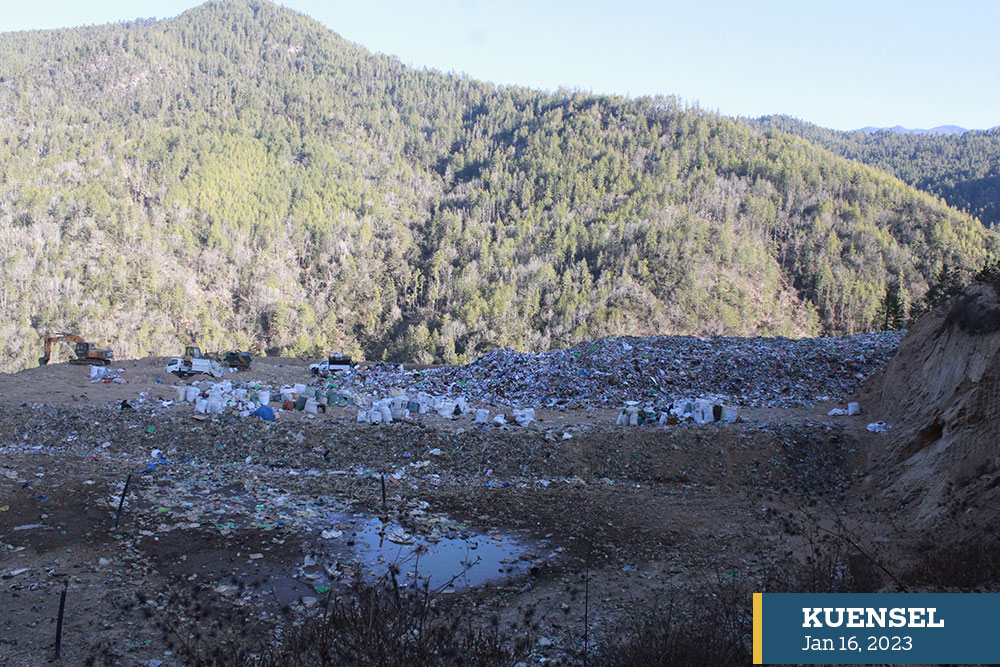… even with a flagship waste programme
Chhimi Dema
Memelakha is not a pleasant place to visit even by accident. The air is filled with the stench of rotting waste and the fumes emitting from the piling wastes in the open-air landfill.
Kitchen waste, solid and e-waste, rags, food wrappers, broken computers, broken polyvinyl chloride (PVC) water pipes, bamboo baskets, beer bottles, food cans, books, and pens – everything recyclable or not – is openly dumped at Memelakha.
Three years ago, in 2020, a programme, the National Waste Management Flagship Programme was launched to change the open dump into a sanitary landfill. There is no change visible today.
According to the flagship programme, waste without the potential for material recovery is to be disposed of in sanitary landfills.
Proposed sanitary landfills, according to the plan of the waste flagship document are engineered disposal sites with proper linings, leachate collection and treatment facilities and vents for the safe release of methane gas. The programme also includes construction of sanitary landfills in dzongkhags and thromdes with post-closure landfill programmes planned to rehabilitate existing landfills which are currently functioning as open dumps.
The Memelakha open dump has not seen any change so far. The open dump was recognised in 1994 to be used for eight years, yet it continues to receive the mounting wastes.
Clean Bhutan’s executive director, Nedup Tshering, said that there are better and more advanced technologies to deal with waste than dumping it in an open landfill.
However, Nedup Tshering, said that technology alone cannot manage waste. “People need to understand and change their behaviour. Social engineering [changing our waste management habits] is required for proper waste management,” he said.
According to the flagship programme document, from 2023 to 2024, the programme would work on the waste source to disposal for nine dzongkhags excluding Thimphu. 2024 is a year away.
The flagship programme is expected to initiate segregation, collection, recovery, treatment and safe disposal facilities, and create information, education and communication techniques to encourage behavioural change.
However, many say that there is no use in segregating waste at source as it is dumped together in the waste collection trucks. A Semtokha resident said that he segregates and asks his tenants to separate waste into recyclable and non-recyclable. “I stopped doing it when the garbage truck driver told me to dump everything together,” he said.
While many are aware of segregation at source, there are no facilities to dispose of segregated waste. “That is why old computers, bottles, rags and plastics land up in the same landfill,” said a Changzamtog resident who claims he segregates his waste all the time.


